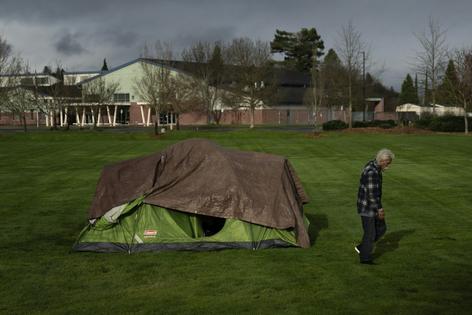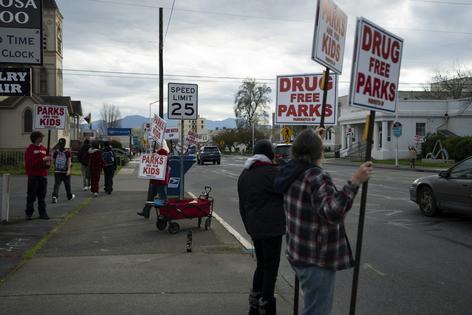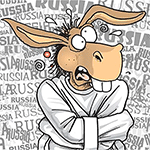Supreme Court to consider whether local governments can make it a crime to sleep outside if no inside space is available
Published in Political News
On April 22, 2024, the Supreme Court will hear a case that could radically change how cities respond to the growing problem of homelessness. It also could significantly worsen the nation’s racial justice gap.
City of Grants Pass v. Johnson began when a small city in Oregon with just one homeless shelter began enforcing a local anti-camping law against people sleeping in public using a blanket or any other rudimentary protection against the elements – even if they had nowhere else to go. The court must now decide whether it is unconstitutional to punish homeless people for doing in public things that are necessary to survive, such as sleeping, when there is no option to do these acts in private.
The case raises important questions about the scope of the Constitution’s cruel and unusual punishment clause and the limits of cities’ power to punish involuntary conduct. As a specialist in poverty law, civil rights and access to justice who has litigated many cases in this area, I know that homelessness in the U.S. is a function of poverty, not criminality, and is strongly correlated with racial inequality. In my view, if cities get a green light to continue criminalizing inevitable behaviors, these disparities can only increase.
Homelessness in the United States is a massive problem. The number of people without homes held steady during the COVID-19 pandemic largely because of eviction moratoriums and the temporary availability of expanded public benefits, but it has risen sharply since 2022.
The latest data from the federal government’s annual “Point-in-Time” homeless count found 653,000 people homeless across the U.S. on a single night in 2023 – a 12% increase from 2022 and the highest number reported since the counts began in 2007. Of the people counted, nearly 300,000 were living on the street or in parks, rather than indoors in temporary shelters or safe havens.
The survey also shows that all homelessness is not the same. About 22% of homeless people are deemed chronically homeless, meaning they are without shelter for a year or more, while most experience a temporary or episodic lack of shelter. A 2021 study found that 53% of homeless shelter residents and nearly half of unsheltered people were employed.
Scholars and policymakers have spent many years analyzing the causes of homelessness. They include wage stagnation, shrinking public benefits, inadequate treatment for mental illness and addiction, and the politics of siting affordable housing. There is little disagreement, however, that the simple mismatch between the vast need for affordable housing and the limited supply is a central cause.
Like poverty, homelessness in the U.S. is not race-neutral. Black Americans represent 13% of the population but comprise 21% of people living in poverty and 37% of people experiencing homelessness.
The largest percentage increase in homelessness for any racial group in 2023 was 40% among Asians and Asian-Americans. The largest numerical increase was among people identifying as what the Department of Housing and Urban Development calls “Latin(a)(o)(x),” with nearly 40,000 more homeless in 2023 than in 2022.
This disproportionality means that criminalizing homelessness likewise has a disparate racial effect. A 2020 study in Austin, Texas, showed that Black homeless people were 10 times more likely than white homeless people to be cited by police for camping on public property.
...continued











Comments